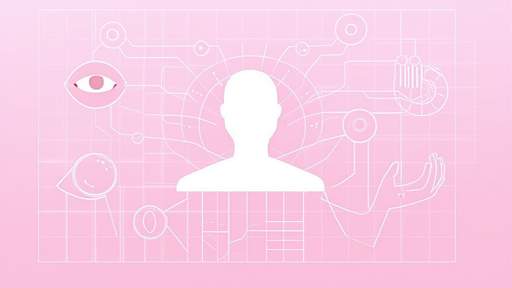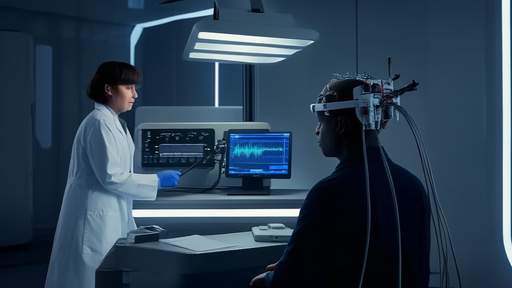The fashion and beauty industries have been revolutionized by augmented reality (AR) try-on technologies, allowing consumers to virtually test products from the comfort of their homes. However, one persistent challenge continues to perplex developers and brands alike: the accurate rendering of skin textures in AR applications. Despite significant advancements in 3D modeling and real-time rendering, replicating the intricate details of human skin remains an elusive goal.
Human skin is a complex, multi-layered organ with unique characteristics that vary dramatically between individuals. From fine lines and pores to subtle discolorations and hair follicles, these minute details contribute to what we perceive as realistic skin texture. Current AR systems often struggle to capture this complexity, resulting in digital overlays that appear unnaturally smooth or artificially uniform. The gap between virtual representation and biological reality becomes particularly noticeable in close-up applications like foundation matching or skincare simulations.
The physics of light interaction with skin presents the first major hurdle. Unlike synthetic materials, human skin scatters light in distinctive ways due to its subsurface scattering properties. When light penetrates the epidermis, it bounces between collagen fibers and melanin particles before re-emerging, creating the characteristic glow of healthy skin. Most AR engines simplify this phenomenon using standard shaders designed for generic surfaces, failing to replicate the depth and luminosity of real skin. This explains why virtual makeup often appears to "float" above the skin rather than blending seamlessly.
Another critical factor involves the dynamic nature of facial expressions. As muscles contract and stretch during speech or emotional changes, skin doesn't move like a uniform elastic sheet. It folds, wrinkles, and shifts in patterns that are unique to each individual's facial structure and age. Current facial tracking systems map movements using a limited set of reference points, unable to account for the micro-shifts in texture patterns that occur during these transformations. The result? Virtual products that distort unnaturally when users smile or frown.
Variations in skin conditions add another layer of complexity. Conditions like acne, rosacea, or psoriasis create highly irregular surface topographies that challenge standard texture mapping algorithms. Most AR solutions default to smoothing filters that erase these characteristics entirely - an approach that not only reduces realism but also excludes users hoping to see how products perform on their specific skin concerns. The ethical implications are becoming increasingly apparent as consumers demand more authentic representations.
The hardware limitations of consumer devices further compound these challenges. While high-end dermatological scanners can capture skin details at micron-level resolution, smartphone cameras and processors must balance accuracy with real-time performance. Compression artifacts, limited dynamic range, and noisy image sensors all degrade the quality of the skin data that AR systems have to work with. Even with advanced machine learning techniques to enhance input images, the starting point often lacks sufficient detail for faithful texture reproduction.
Emerging solutions show promise but reveal new complications. Some developers are experimenting with physics-based rendering (PBR) systems adapted from high-end visual effects studios. These attempt to simulate light interaction at multiple skin layers but require computational resources beyond current mobile capabilities. Others are building extensive libraries of pre-scanned skin textures, though this approach struggles with the infinite diversity of human skin tones and types. The most innovative methods combine neural radiance fields (NeRFs) with real-time tracking, but these remain in experimental stages with significant latency issues.
The stakes for solving skin texture challenges extend beyond aesthetics. Medical applications like teledermatology require precise skin representations for accurate remote diagnoses. Virtual cosmetics testing needs to demonstrate how products will truly behave on varied skin types. Even social AR platforms face user rejection when digital avatars fail to capture recognizable skin characteristics. As these technologies move toward mainstream adoption, the pressure mounts to bridge the uncanny valley between virtual and real skin.
Industry observers note that solving the skin texture dilemma may require rethinking fundamental aspects of AR pipelines. Instead of relying solely on camera input, future systems might incorporate multi-spectral imaging or combine smartphone data with pre-scanned 3D skin maps. Some prototypes are exploring adaptive algorithms that learn individual skin properties over multiple sessions, gradually building personalized texture profiles. What's clear is that as AR becomes integral to digital commerce and communication, users will increasingly demand representations that honor the beautiful complexity of human skin in all its varied glory.

By /Jun 3, 2025

By /Jun 3, 2025

By /Jun 3, 2025

By /Jun 3, 2025

By /Jun 3, 2025

By /Jun 3, 2025

By /Jun 3, 2025

By /Jun 3, 2025

By /Jun 3, 2025

By /Jun 3, 2025

By /Jun 3, 2025

By /Jun 3, 2025

By /Jun 3, 2025

By /Jun 3, 2025

By /Jun 3, 2025

By /Jun 3, 2025

By /Jun 3, 2025

By /Jun 3, 2025

By /Jun 3, 2025

By /Jun 3, 2025